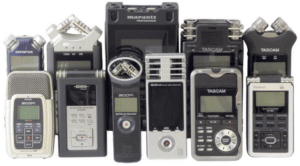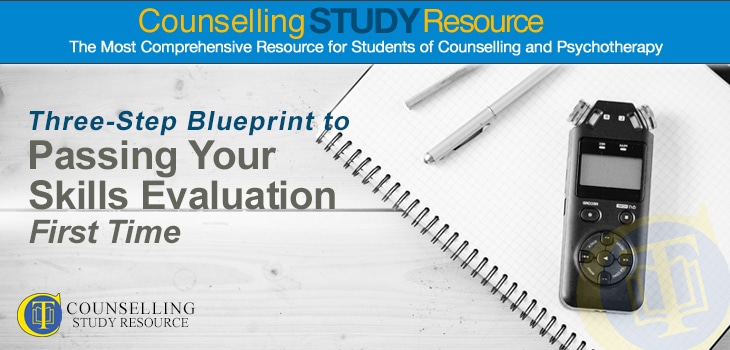Introduction
In counselling training courses, you will have to record your skills in order for these to be evaluated. While this might sound a really daunting prospect, getting into good habits on recording skills can really help your development as a counsellor. Carl Rogers himself was strongly in favour of recording sessions, and was one of the first counsellors to do so.
I cannot exaggerate the excitement of our learnings as we clustered about the machine which enabled us to listen to ourselves, playing over and over some puzzling point at which the interview clearly went wrong, or those moments in which the client moved significantly forward. (I still regard this as the one best way of learning to improving oneself as a therapist.)
- From ‘Empathic: An Unappreciated Way of Being’, The Counseling Psychologist, 1975, Vol. 5, No. 2-10
In this article, I present three steps to help you record your skills confidently, and to write your skills assignment successfully.
Step 1: Start Recording and Listening to Your Skills from Today
Get the equipment right.
 My first advice here is to obtain your own recording equipment. This will enable you to fully understand how it works, to feel comfortable using it, and to trust in its quality (e.g. to record the nuances in the session, such as silences and breathing). These benefits will in turn help you to not to get distracted by the presence of a recording device, or by worrying whether it’s working properly – so supporting the building of the therapeutic relationship and empathy.
My first advice here is to obtain your own recording equipment. This will enable you to fully understand how it works, to feel comfortable using it, and to trust in its quality (e.g. to record the nuances in the session, such as silences and breathing). These benefits will in turn help you to not to get distracted by the presence of a recording device, or by worrying whether it’s working properly – so supporting the building of the therapeutic relationship and empathy.
Many people buy dictaphones, but these aren’t the best type of device for this purpose: they are intended more for dictation by one person than for dialogue between two people. I would recommend a proper recording device, which you can spot by the microphone that sticks up at the top. You can often find good secondhand ones for reasonable prices on auction websites (e.g. eBay) – just search for ‘handheld pro audio recorder’. So long as it works, you’re all set!
Reap the rewards.
There are several key benefits of recording your skills sessions:
- You can listen back to them yourself and learn from this.
- You can ask peers for feedback.
- You can encourage peers to record their own sessions, and then you can learn from each other.
Don’t forget to make a contract even in simulated sessions.
What to listen for
When you listen back, try not to get distracted by the material that the client is bringing; while this is clearly important to the session, it’s not your priority for this exercise. Instead, ask yourself:
- How did I respond to the material?
- Can I name the skill?
- What effect did the skill have on the client?
- What could I have done differently?
You could use the Carkhuff and Truax empathy scale to rate yourself.
Free Handout Download
Counselling Skills Explained
Step 2: Define Your Skills
Your awarding body will be seeking evidence that you know what the skills are, are aware where to use them, and understand the effect of each skill on the client. I really recommend taking some time to write yourself a skills master-list. For each skill (reflection, paraphrasing, silence, open questions etc.), write down a definition, what it does, and how it affects the client.
To help you with this, we have created a handout that explains the key counselling skills. Download it for free below.
Step 3: Apply This to Your Assignment
Once you are comfortable with your recording equipment, you will be able to make your recording in a relaxed and confident way. Then, listen back to it and note down the timecode (shown on the recorder) every time you hear yourself using a skill. You can then use your skills master-list to name the skill and relate it to the client’s material.
Once you have completed this preparation, you are ready to write your assignment, again with the help of your skills master-list. For each use of skills that you have recorded, write down the short quote that shows the transaction between your client and yourself. State what skill you used in this quote, provide its definition, describe what it did, and reflect on how it affected the client and the therapeutic relationship.
This is a clear and simple way to present your evidence, so ticking all the boxes for the awarding body: it’s a winning formula!
I hope that this three-step blueprint helps you to link your skills to practice, and to write a skills assignment that helps you pass your evaluation with flying colours!
